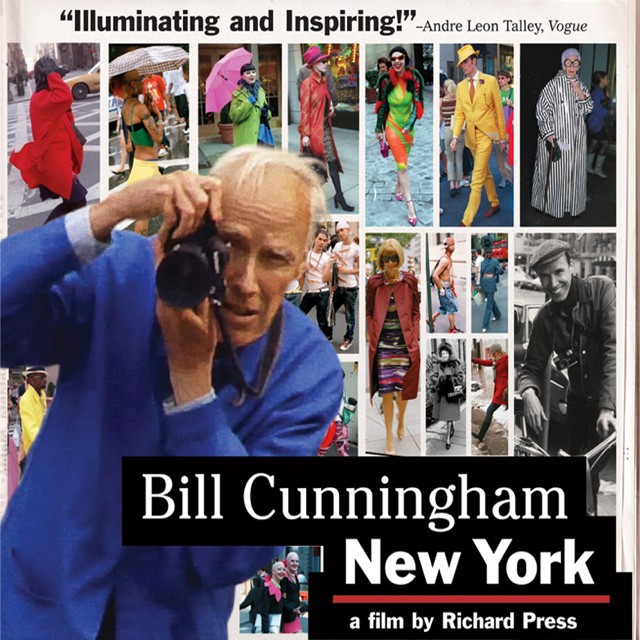There was always a sense of a kind of quotidian world...that one sees in photographs that were done at the turn of the century, for example, by the Seeberger brothers, or different people who were documenting the bon monde, but it wasn't really street style in that it wasn't, theoretically, "ordinary" people, going about their business dressed in fascinating ways.
总会有那么些场景或照片记录着一个国家的变迁,比如说Seeberger兄弟还有其他这些人的照片见证了bon monde,但这些都不算真正意义上的街头潮流理论上的 "普通人"那些仅仅去做生意,或是什么事情时穿着很棒的人普通人。
That really begins to happen in the 1960s, and that is the moment which Bill begins.
真正的街头潮流大概开始于二十世纪六十年代Bill大概也是那时开始拍照的。
On an Easter Sunday, I came back here to get film, and the phone rang and I picked it up, and it was the Times fashion critic and editorial writer Charlotte Curtis, who I knew very well.
有一次的复活节我自己回来洗我的照片忽然接到了一个电话,是《纽约时报》时尚评论的编辑Charlotte Curtis。
And she said, "Bill, grab your cameras and get up to the Sheep Meadow as quick as you can. They're having a be-in."
她让我马上带着相机去Sheep Meadow她说,"那儿正在举行be-in"。
What the hell is a be-in?
我完全不知道什么是be-in。
I jumped on my bike and went up to the Sheep Meadow, and there were thousands of kids.
于是我马上骑车跑到Sheep Meadow那儿有很多很多的年轻人。
Oh! I mean, you just never saw anything like it.
我从来没见过那样的场景。
All the flower children, the hippies, everything,
那些带着花儿的孩子,嬉皮士那一切都很新奇。
All up there, and it was a lovely day, and they were lying on the grass or the dirt or whatever it was, and they were dressed.
那真是有趣的一天他们都打扮的很有趣躺在草地上或是泥地里。
It was marvelous, and that really did me in.
那真是很奇妙完全吸引住了我。
From then on, that was it, kid.
从那时起,我开始拍这些年轻人。
My Sundays and Saturdays...Saturdays down in SoHo, and Sundays up in the park...were completely taken.
我的周末计划有了些改变周六在城里拍照周日跑到这些公园去照。
That was it.
就是这样。













